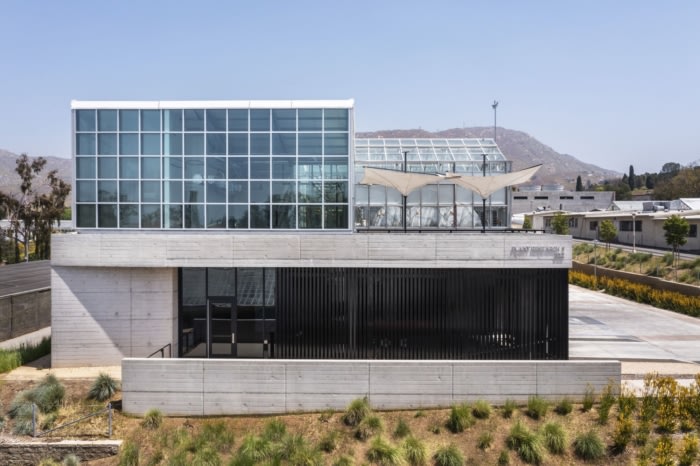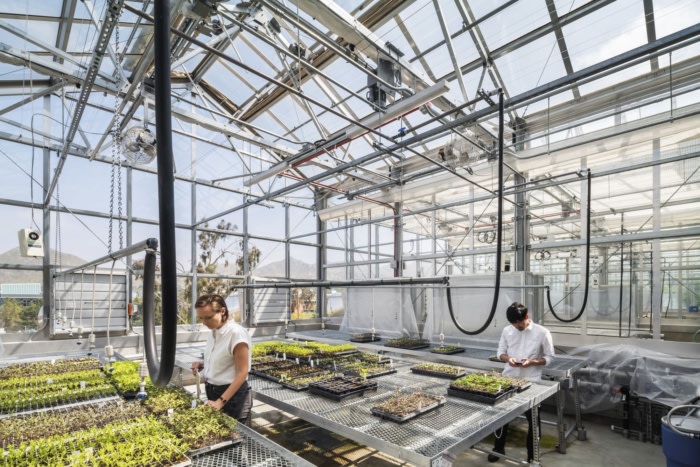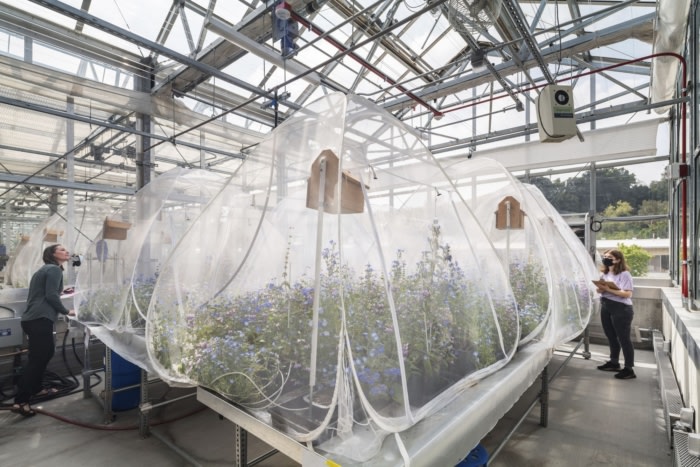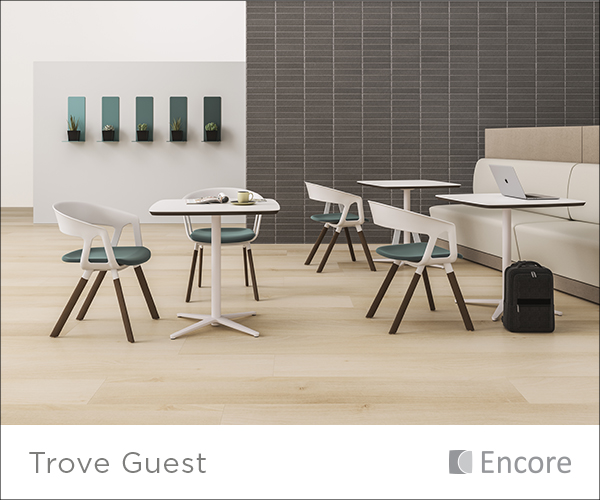University of California, Riverside – College of Natural and Agricultural Sciences (CNAS) Plant Research 1
Perkins&Will completed the College of Natural and Agricultural Sciences (CNAS) Plant Research 1 for the University of California, Riverside.
The University of California, Riverside’s College of Natural and Agricultural Sciences (CNAS) has opened a new plant research facility, ushering in a new era of scientific development and innovation for the institution. Perkins&Will’s Los Angeles studio led the award-winning design of the two-story, 30,000-square-foot greenhouse facility, which equips the college with best-in-class agricultural research technology, enabling researchers to conduct studies previously unattainable at the university.
Several research activities have already been underway inside the new facility, which completed construction in 2021 and has gone through several years of preparation and testing. Some of the latest experiments include investigating how well bees can pollinate in different climates, testing how to grow rice to withstand drought and flooding conditions in countries like India, and examining how different kinds of plants can act as a decontaminant for soil.
“It’s really a machine, a tool for research,” says Yan Krymsky, design director of Perkins&Will’s Los Angeles studio. “But beyond that, we wanted to create a structure that spoke to the legacy of the university.” That’s a legacy steeped in a commitment to advancing the agricultural and natural sciences. It goes as far back as 1907 when the University of California Citrus Experiment Station, which later became UCR, was constructed. The new facility sits within a district of greenhouses originally built on the main campus in the 1960s.
The gables of the surrounding greenhouses inspired the design of the Plant Research building, which is expressed in the upper-level glass roofs. The serrated concrete walls at the ground level and the array of fans running across the structure’s south elevation compliment the rhythmic quality of the upper-level greenhouses. The minimalist use of concrete, steel, and glass allows the building to display its overall function and historical connectedness all in one stroke.
A compact cluster of 16 greenhouse modules sits on the second level of the research facility atop a concrete-wrapped ground level. The ground level includes a workroom for potting plants and other activities, a room for growth chambers, and other amenities, including a lobby, breakroom, and restrooms. The serrated concrete wall that envelops the lower-level acts as a thermal mass that stabilizes swings in internal temperature, reducing the need for mechanical air conditioning and capitalizing on the Southern California climate.
Each upper-level greenhouse is encased in double-pane polarized glass, the transparency of which reveals the research activities taking place within. Humidity, temperature, lighting, and other conditions can be independently calibrated in each module to mimic a diverse range of conditions. Climate control is assisted through vertical and horizontal automated shades that enable researchers to closely tune the natural light, adding another layer of customization. Air-conditioning stabilizes select areas, but an evaporative cooling system covers the whole building, allowing it to maintain temperatures lower than other research greenhouses on the campus.
Design: Perkins&Will
Photography: Here and Now Agency



















Now editing content for LinkedIn.